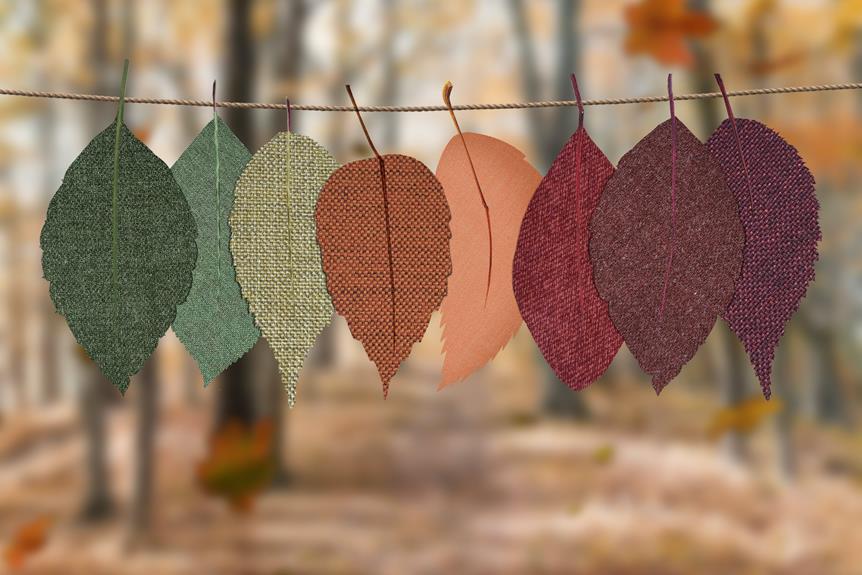You know the saying, 'Like attracts like'? Well, when it comes to finding the perfect fabric for sticky removable glue, certain types just seem to stick better than others.
Cotton, denim, linen, felt, and canvas are your go-to options. These fabrics not only provide a sturdy surface for the glue to adhere to, but they are also easy to work with and won't leave a sticky residue behind when it's time to remove the glue.
So, whether you're crafting, sewing, or just looking for a reliable adhesive option, these fabrics will have you covered. Let's dive in and explore the world of sticky removable glue and the fabrics that work best with it.
Key Takeaways
- Cotton and denim have an absorbent nature that allows for a secure bond with sticky removable glue.
- Linen is a smooth and versatile fabric that forms secure bonds with sticky removable glue.
- Felt has a soft and textured surface that allows for secure bonding with sticky removable glue, making it ideal for crafting projects.
- Canvas provides a versatile and durable surface for creating secure bonds with sticky removable glue, making it suitable for various crafting endeavors.
Cotton
When using sticky removable glue, cotton's absorbent nature makes it an ideal fabric for ensuring a secure bond with your project. Cotton offers excellent adhesive bonding due to its ability to absorb the glue, creating a strong and reliable hold. Additionally, cotton is known for its washability, allowing you to easily clean any excess glue without compromising the fabric's integrity. Its breathability is another advantage, ensuring that the bonded area remains dry and comfortable. Furthermore, cotton's durability makes it a reliable choice for long-term projects, as it can maintain its adhesive strength even after multiple washes or extended use.
If you're working with denim, which is a type of cotton fabric, you'll find that its sturdy nature provides exceptional adhesive strength. The fabric flexibility of cotton also allows for easy maneuvering and positioning when working with sticky removable glue. Whether you're crafting, sewing, or working on a DIY project, cotton proves to be an excellent choice for ensuring a secure and long-lasting bond.
Denim
Denim provides excellent adhesive strength due to its sturdy nature, making it an ideal fabric for use with sticky removable glue. Its durability and thickness allow it to hold up well against the adhesive properties of the glue, ensuring a secure bond without compromising the fabric's integrity.
Whether you're working on a DIY denim patchwork project or hemming your favorite jeans, sticky removable glue can be a valuable tool for achieving clean and precise results.
Additionally, denim's style versatility makes it a popular choice for various fashion and crafting endeavors. From classic blue jeans to trendy denim jackets and accessories, this fabric offers a wide range of options for incorporating sticky removable glue. You can confidently experiment with different embellishments, patches, and decorative elements, knowing that the glue will adhere effectively to the denim surface.
When using sticky removable glue with denim, it's important to follow the manufacturer's instructions for application and removal. With proper care, you can leverage the adhesive properties of the glue to enhance your denim projects while preserving the fabric's quality and appearance.
Linen
Linen provides a smooth and versatile surface for effective adhesion with sticky removable glue, allowing you to create secure bonds for various crafting and sewing projects. This natural and durable fabric is breathable and versatile, making it an excellent choice for a wide range of applications. Linen's smooth texture ensures that sticky removable glue adheres firmly, while its breathability allows for comfortable wear and use in various climates.
Here's a comparison table to help you understand the benefits of using linen with sticky removable glue:
| Attributes | Linen |
|---|---|
| Durability | Natural and durable |
| Versatility | Suitable for various projects |
| Breathability | Allows for comfortable wear |
| Adhesive Strength | Forms secure bonds with sticky removable glue |
As you can see, linen offers durability, versatility, breathability, and strong adhesive qualities when used with sticky removable glue. These characteristics make it an ideal choice for crafting and sewing projects where a reliable bond is essential.
Felt
Felt provides a soft and textured surface that allows sticky removable glue to create secure bonds for various crafting and sewing projects, making it a versatile option for your adhesive needs. When it comes to felt crafting, the adhesive properties of sticky removable glue are particularly important. Whether you're working on a DIY felt project, creating fabric decorations, or assembling a plush toy, having a reliable adhesive is key to achieving professional-looking results.
Sticky removable glue adheres well to felt, ensuring that your crafting creations stay intact over time. This type of glue is especially useful for attaching embellishments, securing layers of felt together, or even repairing minor tears or frays in felt fabric. Its versatility and ability to form strong bonds make it an essential tool for any felt crafting enthusiast.
With sticky removable glue, you can confidently tackle a wide range of projects, knowing that your adhesive will effectively bond with the felt material, providing a durable and long-lasting hold.
Canvas
When working on crafting and sewing projects, canvas is another fabric that provides a versatile surface for sticky removable glue to create secure bonds. Canvas, known for its durability, offers a sturdy foundation for adhesive applications. The texture of canvas, with its woven pattern and substantial weight, allows for the adhesive to adhere firmly without seeping through the fabric. This makes it suitable for various crafting endeavors, such as creating fabric collages, attaching patches, or securing trims.
The durability of canvas ensures that the bond created by sticky removable glue remains robust, even when the fabric is subjected to wear and tear. Whether you're working on a DIY upholstery project, designing canvas tote bags, or adding embellishments to a canvas-backed art piece, the adhesive bond will endure through repeated use. The canvas texture also provides a forgiving surface for repositioning items during the crafting process, allowing for adjustments without compromising the integrity of the bond.
Frequently Asked Questions
What Are the Best Cleaning Methods for Removing Sticky Removable Glue From Cotton Fabric?
To remove sticky removable glue from cotton fabric, try using organic solvents like rubbing alcohol or vinegar. Test a small area first to ensure fabric compatibility. Gently dab the adhesive residue, then wash with mild soap for fabric protection.
Can Denim Fabric Be Damaged by Using Certain Types of Sticky Removable Glue?
Using certain types of sticky removable glue can potentially damage denim fabric. It's important to consider denim care and adhesive compatibility when selecting an adhesive to ensure fabric preservation.
How Does Linen Fabric Respond to Different Types of Sticky Removable Glue?
Linen fabric has good compatibility with most sticky removable glues. The adhesive strength should be moderate to avoid damage. The fabric's texture allows for proper adhesion without causing harm. It's a great choice for various crafting projects.
Is Felt Fabric More Prone to Staining or Discoloration When Using Sticky Removable Glue?
When using sticky removable glue, felt fabric may be more prone to staining. To prevent damage, consider testing removal methods on a small area. Additionally, cotton fabric, denim, linen, and canvas have unique responses to glue.
Are There Specific Considerations for Using Sticky Removable Glue on Canvas Fabric, Such as Stretching or Priming the Material?
When working with canvas fabric, it's crucial to ensure proper stretching and priming to prepare the material for adhesive compatibility. Always follow cleaning methods to avoid fabric damage, and be mindful of the glue response to minimize staining risk and discoloration concern.
- Why Is Red Velvet Not Red? - April 25, 2024
- How Do You Describe Velvet Fabric? - April 25, 2024
- How Strong Is Velvet? - April 25, 2024





